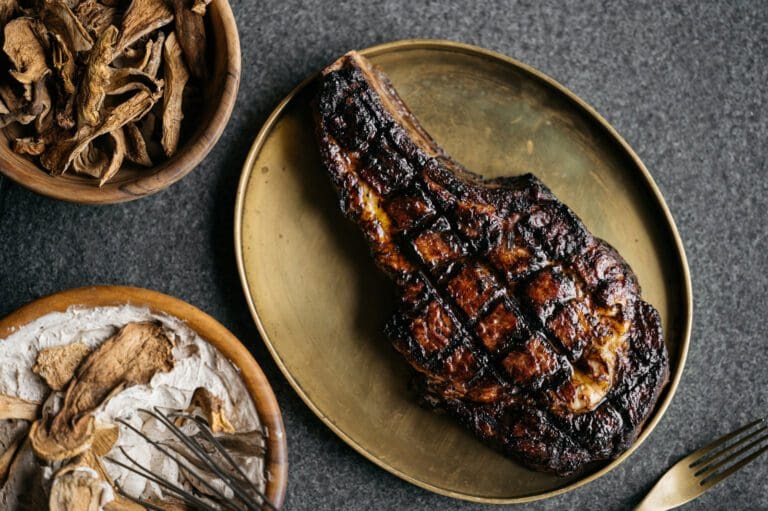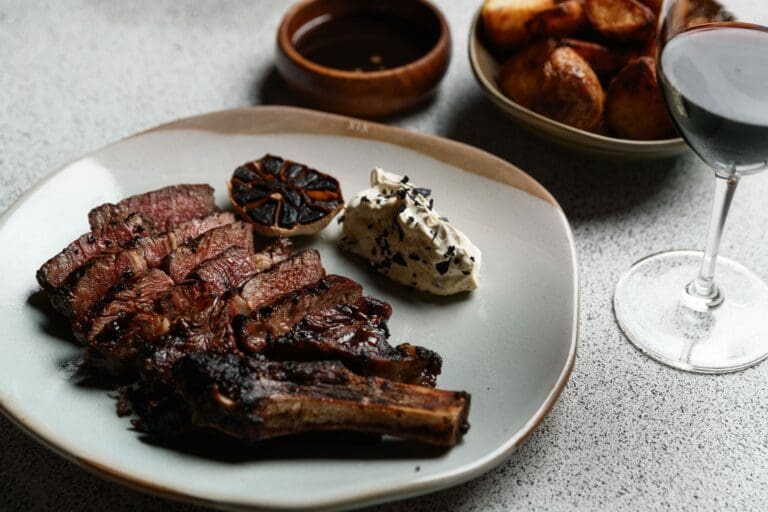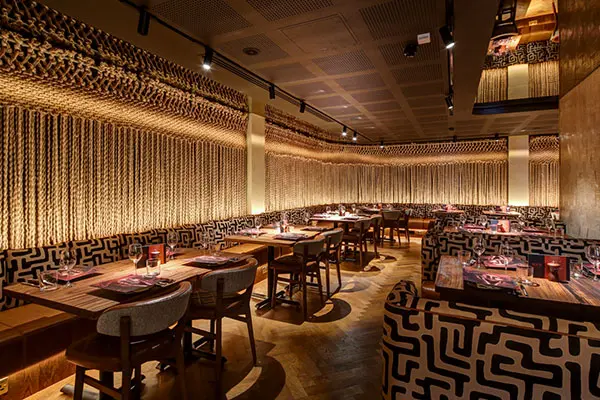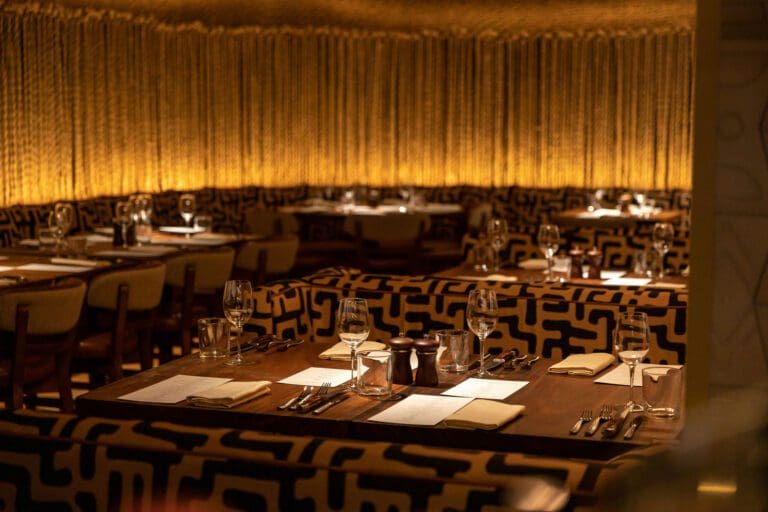Dry-aged meat has become one of the trendiest, most sought after menu items across the west over the past few years, with premium restaurants offering a variety of aged meat to discerning diners.
The word has spread: Dry-aged meat is something special, something different, and something every steak lover should experience.
Meat & Wine Co doesn’t just offer a variety of dry-aged steak through our exclusive AGED programme – we also dry age our own steak in house, with our own unique dry ageing process. This process offers additional flavour infusions and a better deal for the diner.
Here’s a little more detail for those new to dry-aged steak or looking to learn more about our processes, the standard dry ageing process, and how dry-aged steak differs from wet-aged steak.
What is dry-aged meat?
Dry-aged beef is a specially prepared meat that has quite literally been aged to bring out its natural flavours. However, unlike what might happen if you were to leave raw steak in the fridge – or even out on a bench – at home, this meat is aged in a highly controlled environment.
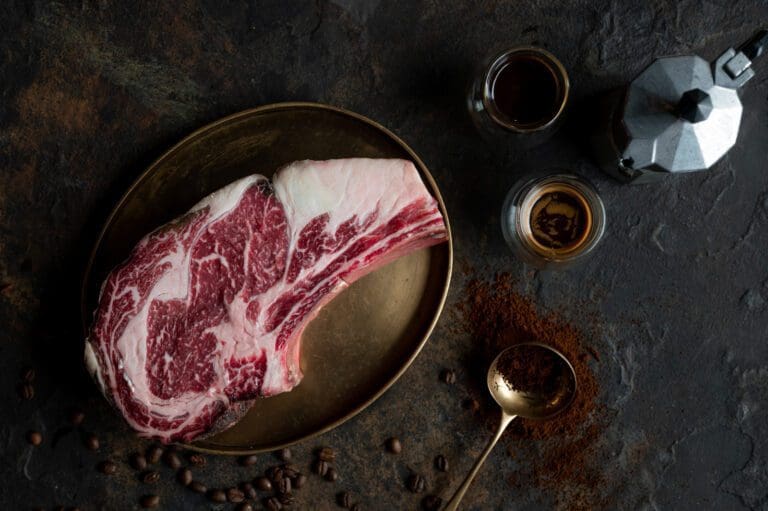
It all begins with large slabs of meat, as steak is not aged in small individual cuts. These large slabs are placed into temperature and humidity controlled dry ageing fridges, and left there from anywhere from several weeks for several months.
During this time, the enzymes within the meat will break down the muscle fibres and connective tissue. This makes the meat incredibly tender, with a melt-in-your-mouth texture in every bite.
While the enzymes do their work, the slab loses moisture into the environment – losing up to a third of its initial volume in the process. This largely happens on the outer layer of the slab, which will slowly form a hard crust all over the meat. This crust further helps the dry ageing process, locking in the rest of the moisture inside the beef and allowing the enzymes to continue their work without the meat completely drying out.
Once the dry ageing is complete, the butcher or chef will carve off the hard, outer layer of the steak and discard it.
What’s left will be unbelievably tender steak with the tough muscle fibres broken down, the moisture content lowered to amplify the natural flavours, and a rich nutty flavour and unparalleled taste and texture.
The chef or butcher will then cut the remainder of the slab into single serving sizes, ready to cook to your liking and serve.
How does The Meat & Wine Co dry age steak?
Meat & Wine Co follows the standard dry ageing process, but only up to a certain point. Our in-house dry ageing process starts with large slabs of meat, carefully placing them into controlled dry ager for anywhere from one to three weeks.
That’s enough time for the hard crust to begin forming on the outside of the meat. This crust is absolutely essential for the ageing process to occur.
At this stage, our chefs deviate from the standard. We coat the slab in a thick layer of fat – butter. This encases the meat, and stops the drying process. On the inside, without oxygen, bacteria can no longer effectively break down the meat, however the proteins and enzymes in the butter take over and continue to age the beef. This ensures dry-aged tenderness and flavour, without being overwhelming, making it the perfect introduction to dry-aged steak.
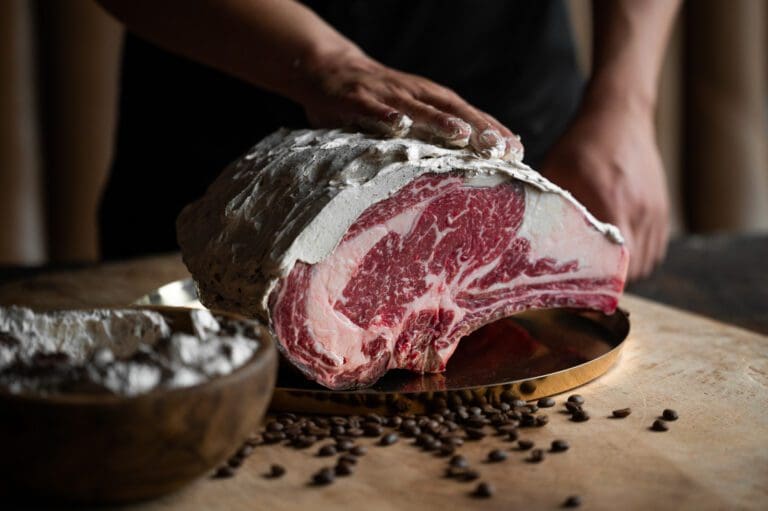
There are also two other excellent benefits of the butter coating for our dry-aged steak.
The first is that it offers the possibility of infusing the butter – and therefore the meat – with a subtle flavour. Our chefs take full advantage of this option, adding a variety of incredible flavours, each available for only as long as stock lasts.
Sometimes, you may have the option of enjoying a premium dry-aged steak infused with truffle, while other times, that flavour might be honey and thyme. Or, you can opt for a standard dry-aged steak with no flavour infusion.
Ask your wait staff for the current dry-aged infusion steak.
The second purpose the butter serves is to essentially stop the hard crust from forming any further. As this crust comes from the meat itself, it reduces the amount of useable steak that comes from each slab, which increases the final cost for the diner. By retaining more of the meat, Meat & Wine Co can discard less and offer a more affordable dish for steak lovers.
What is wet aged steak?
Wet ageing steak is quite a different process.
The beef is stored in a refrigerated environment in a vacuum sealed bag. This ensures that there is no oxygen around the meat to age it, so the beef ages in its natural juices.
Similar to dry ageing, these natural enzymes work to break down muscle fibres in the meat, which tenderises the steak and allows its natural flavours to shine.
This process can take anywhere from one to six weeks, depending on the cut itself and the desired results.
The result is an aged beef that’s more tender than standard beef, but less so than dry-aged meat. It contains more moisture, and the aged flavour is not as strong. This can be a good first step for anyone interested in dry-aged beef, but who would prefer to try a more subtle flavour before ordering the dish.

Try premium dry-aged meat with Meat & Wine Co
Meat & Wine Co specialises in beef, offering a variety of premium quality steaks, each prepared and cooked with care to perfection.
The AGED programme is the jewel in our steak crown, providing unrivalled dry-aged steak that’s exceptionally tender and flavourful. Make your booking at Meat & Wine Co in Mayfair to experience dry aged beef from one of the best steak restaurants in London.
